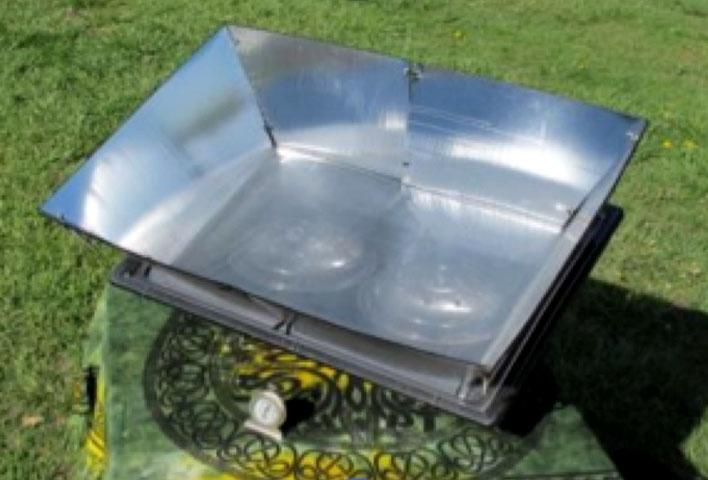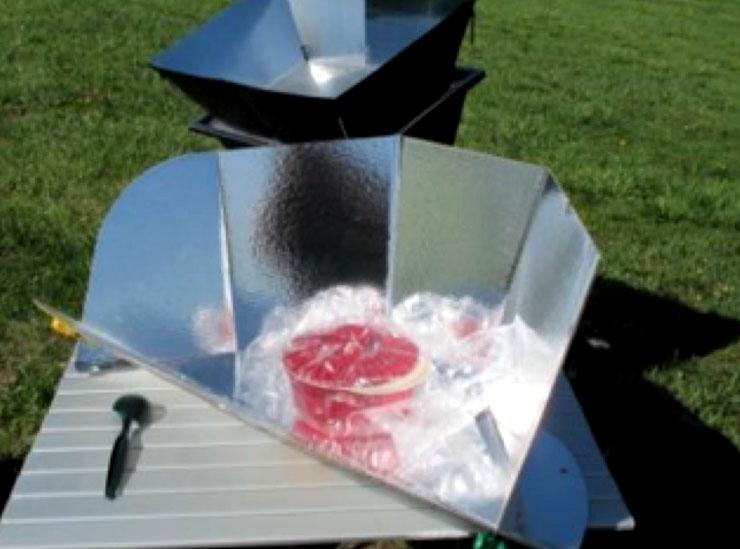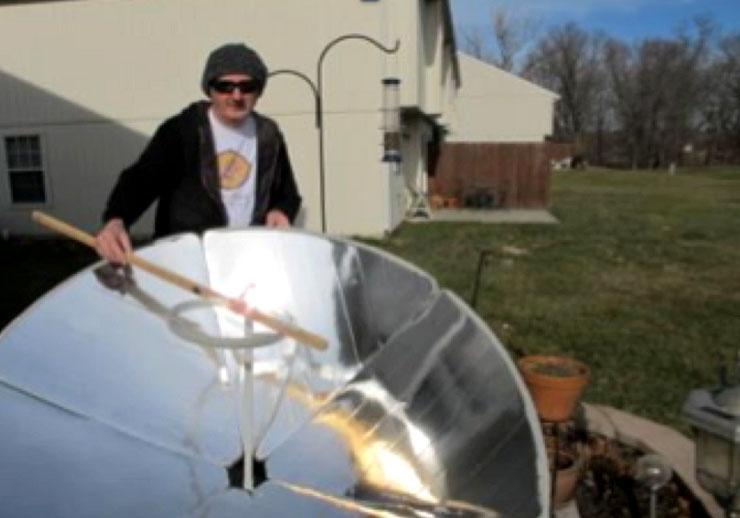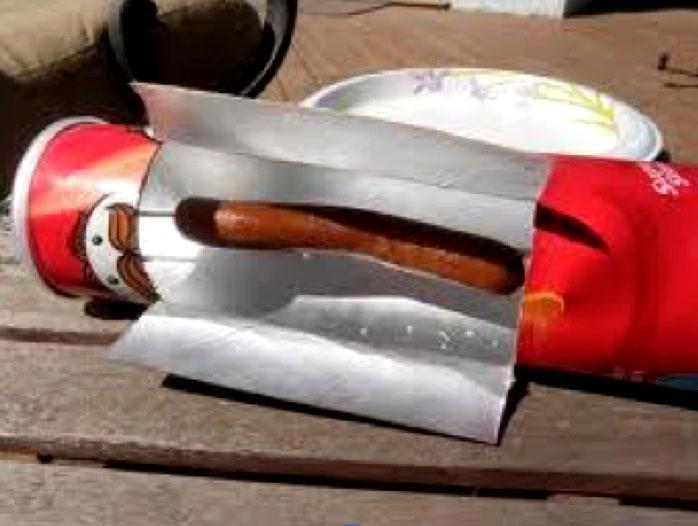Solar Cooking: An Alternative to Summer Barbecues
By Bill Price, Co-Chair, Kansas Permaculture Institute, Board of Directors
A lot of us love cooking outdoors and can’t imagine what summer would be like without barbecues. But there is an alternative. If you haven’t considered solar cooking, maybe this article will, at least, cause you to think about trying it.
Solar cooking uses the energy provided by the Earth’s Sun. In most places, it’s abundant and it’s always free. Using reflective panels to direct the sun’s energy into your cooking vessel, solar cooking largely follows basic slow cooker recipes.
There are three common types of solar cookers: Box cookers, panel cookers and parabolic cookers. Here’s a review of some of these options:

The Sun Oven: The Cadillac of Box Solar Cookers
These cookers typically come with polished aluminum reflectors made with tempered glass and usually include telescoping arms that adjust to the Sun’s angle. They also have a built-in thermometer so you know how hot the oven is. The photo shows two Cornish game hens with trimmings, which I cooked for Thanksgiving one year. Solar cooking does not depend on the temperature outside, it only depends on the presence of the sun. I have made stews, cobblers, baked potatoes, barbecued chicken, slow-roasted pork, rice and cookies—all year round. Once the sun oven gets hot, it will hold the temperature even if you have some clouds roll in momentarily. my solar cooker has reached 400 degrees Fahrenheit, even during the winter in Kansas City.

The Sport Box Solar Oven: Runner Up
Reflectors on this unit are made of aluminum foil that’s glued onto plastic. It has built-in aiming angles, summer and winter. This oven does not get as hot as the sun, nor does it hold as much heat during moments when clouds roll in. It does, however, do a good job of cooking just the same. As you can see, this oven will hold two cooking pots.

The CooKit
The CooKit is a panel cooker, which does not have a box to trap the sun’s heat during cooking. Pictured here the cooking vessel is used to trap the heat. I recommend putting a ceramic or metal pot in an oven bag to help hold heat and moisture. It’s made from cardboard and aluminum foil. This cooker will fold down to a size that fits inside most backpacks. Because it doesn’t hold heat, it will not get as hot as the box cookers, so you’ll need a lot more full sun to cook with.

The Parabolic Sun Cooker
Parabolic sun cookers are a great alternative to box cookers when your food needs a tad more heat to be cooked right. It’s an ideal choice for frying bacon and eggs, making popped corn, boiling hot water in a kettle, or grilling hamburgers. The parabolic cooker reflects the sun’s energy into a focal point that allows you to cook with some very high temperatures.
WARNING: Do not put your hands in that focal point. It can heat up to 450 degrees Fahrenheit and cause severe burns. The piece of oak I have in my hand in the photo took five seconds to catch fire. There are a variety of these available and even satellite dishes covered in aluminum foil will work. They require constant adjustment to keep the sun’s energy focused under your cooking pan. You will need cooking pans that can withstand high heat cooking.

Homemade Solar Cookers
For as many solar cookers you can purchase, there are probably three times as many varieties of homemade cookers. The Pringles cooker is made from, wait for it, Pringles cans. Since most of these cans have an aluminum-coated lining, they can be cut open to create a flap (like the Space Shuttle), skewered, and then the pointed at the sun to cook. It will not get hot enough to cook raw meat but it will get hot enough to really heat up your hotdogs. They are mostly sourced from reusable materials, cost nothing, and provide a great rainy-day project.
Before you begin your solar cooking adventures, please consider these important tips:
- Since there is no apparent heat source, folks seem to think the cooking pans are not hot. They are indeed as hot as the inside of a conventional oven. Use a hot pad to handle your cooking pans.
- While it is almost impossible to burn the food you are cooking. you can cook the moisture out of your food if you cook it too long.
- With solar cooking, time is of the essence. You cannot adjust the temperature by turning the knob on your oven at home.
- Solar cooked food just seems to taste better.
- There is a worldwide effort to replace cooking by fire with solar cooking. This is largely evident in developing countries in which people have suffered chronic health issues caused by the daily inhalation of smoke from cooking with fire.

